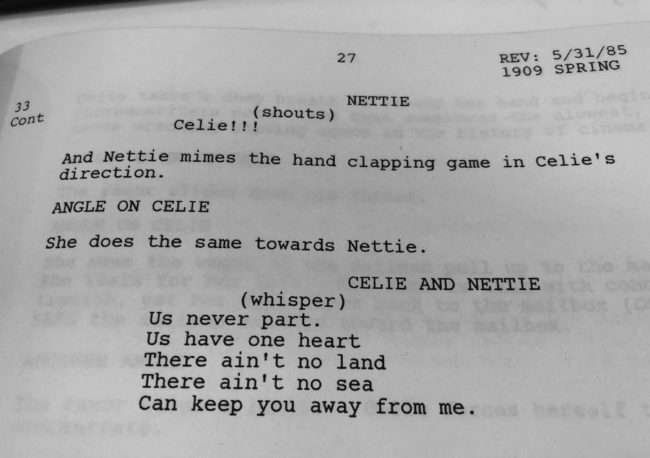WGF Summer of Screenplays: Our Five Fave Sisters on Screen
This week, our Director of Programs and Community Outreach, Libbie Anderson, explores her favorite portrayals of sisters in film in honor of National Sisters Day on Sunday, August 5. Growing up, I had a hard timing believing my mom when she would promise that someday my sisters would be my best friends. There seemed to be a canyon-sized gap between us and the loving, hilarious Tanner sisters on Full House, who could cleanly settle their disputes before the next commercial break.
Instead, I found solace in the beautifully imperfect portrayals of sisters to be found in books and elsewhere on screen that seemed to prove that, under the loving optimism, there could be layers of deeper emotion, chaos and confusion that are exquisitely unique to sisterhood. And it’s precisely the turmoil we endured together that makes my sisters my most trusted confidantes today.
Below are a few of my favorite portrayals of sisters on screen. You can read the screenplays for each in the WGF Library.
THE VIRGIN SUICIDES (1999) written by Sofia Coppola
There are few sisters in pop culture who are as affecting as the Lisbons. In The Virgin Suicides, Sofia Coppola perfectly captures the dreaminess of being a young girl, and at the same time takes deadly serious the angst of teenhood. In their parents’ and community’s attempts to keep the sisters pure and safe, the Lisbon girls are bonded in their suppression. Where young female characters are often written at arms-length, Coppola brings a richness to and respect for her teenage characters scarcely captured before.

MARGOT AT THE WEDDING (2007) written by Noah Baumbach
Margot at the Wedding is a film that perfectly captures the truly schizophrenic emotional dynamics that can exist between sisters. In a single exchange, years of resentment dissolves into genuine admiration and back again. The decades of secrets, judgement, affection and care that has entangled this sisterhood are glaring, but nothing from the past is laid out in tedious exposition. Sisterhood is incoherent and messy, and I love that Noah Baumbach doesn’t try to make much sense of it.

MISTRESS AMERICA (2015) written by Noah Baumbach and Greta Gerwig
In Mistress America, Noah Baumbach again explores sisterhood, or rather, soon-to-be step-sisterhood. As the product of a blended family, I relate to the fascination and skepticism Tracy has for her elder step-sis. Tracy becomes a passenger to Brooke’s antics and is simultaneously intoxicated by Brooke’s moxie and horrified by her life choices. They quickly and easily slip into the love-and-judgment feedback loop that is quintessential to sisterhood.

WHATEVER HAPPENED TO BABY JANE? (1962) written by Lukas Heller
Okay, this is a worst case scenario as far as sisterhoods go, but it's a classic to be sure. Joan Crawford and Bette Davis channel their real life drama through their characters, Blanche and Jane Hudson, to take sibling rivalry to uncharted territory. The claustrophobic film oozes with contempt and despair, and provides a truly frightening view of how fame and jealousies can warp what could otherwise be a powerful bond (that goes for on screen and off.)

THE COLOR PURPLE (1985) written by Menno Meyjes
The Color Purple demonstrates the power of sisterhood at a time and place where it would be seemingly impossible to thrive. Set in the early 1900's in the south, Celie's sister Nettie is ripped away from her at a young age. Alone, Celie is forced to face horrific abuse and demoralization at the hands of her father, then by her husband. Gradually, in her sister's absence, Celie finds strength and support from other women, forging new bonds and definitions of sisterhood. It's the very loss of her sister at a young age that informs her path to come, made that much more powerful when the two are reunited in the end.

Search for these screenplays and more in our Library Catalog.
